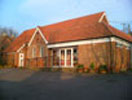|
|
Hempstead Village Hall Management Committee |
Hempstead Village Hall Management Committee (VHMC) is a charity, responsible for the maintenance and upkeep of the Village Hall and its surrounds, and the green open space to the rear, known as The Glebe.
As a charity, all funds are generated through proceeds from renting the hall out to anyone wishing to hold a meeting or event. Full details of the hall size and charges are available on the following pages. |
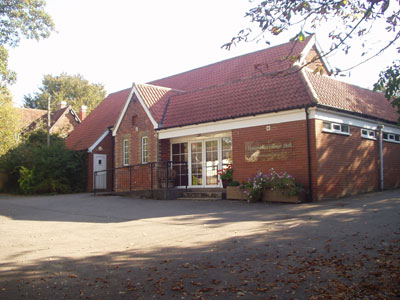
|
| In 1999 the Village Hall was refurbished and extended with the aid of grants from the National Lottery Charities Board, Essex County Council, Essex Environmental Trust, Uttlesford District Council and Hempstead Parish Council and now provides an up to date community hall with facilities for social and recreation activities. In November 2013 we opened a new patio area at the rear where the natural amphitheatre style is perfect for gatherings.
The patio proved so popular that in Autumn 2021 it was lifted and a new extended patio was laid across the whole rear of the hall, thanks in part to a grant from Uttlesford's Community Project Scheme. A sun awning was also added above the patio doors thanks to a grant from the Rural Community Council of Essex, another outside light was fitted and electrical socket points were introduced allowing patio events to have lighting and equipment outside.
Whatever your interest, the facilities provided by Hempstead Village Hall can make your event a successful one whether it is for social or fund raising Events, adult or childrens' parties, celebrations, wedding receptions, drama and musical performances, leisure, education, meetings or seminars. |
The current committee comprises:
| Russ Wide - Chairman |
 |
Julie Wilson - Bookings Secretary |
 |
| Claire Dittrich |
 |
Diana Frost - Secretary |
 |
| David Boreham - Gardeners' Club |
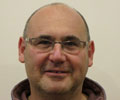 |
Sean McCarthy - Parish Council |
 |
| Martyn Long - Play Area |
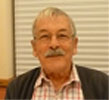 |
Mark Dymond - Drama Society |
 |
| Julian McCarthy |
 |
Julie Pledger - Cubs |
 |
|
The Millennium Tapestry |
| The tapestry celebrates the end of the second millennium and is a glimpse of the history of Hempstead over the last thousand years. Topography, trees and wild animals form a backcloth of our story. Both indigenous and non-indigenous trees mix to remind us that old and new have always co-existed. To tell the story of the development of Hempstead, pictures have been arranged clockwise in a spiral beginning at the top left-hand corner and ending in the centre of the tapestry. |
| We are not sure who first cleared the forests and settled here so we start with two pictures representing invaders who began to shape this part of the country during the first millennium AD. During the first century the Romans (1) overcame the Celtic tribes in this area. They in turn were superceded by the Saxons who were well established by the end of the first millennium. It was the Saxons who organised the land into administrative areas called Hundreds. This part of the shire of the East Saxons (Essex) belonged to the Freshwell Half-Hundred (2) as can be seen on the map. Near the centre of this half-hundred, close to Anser Gallows Corner, the Hundred court met. As the corner's name suggests, that gruesome piece of street furniture, the gallows (3) was erected here, conveniently placed for the dispatch of the condemned. From Saxon Times, through the Middle Ages and into Tudor times, until at least as late as 1568, the gallows was still serving its grizzly purpose. How many corpses were left to swing in the wind here we will never know. |
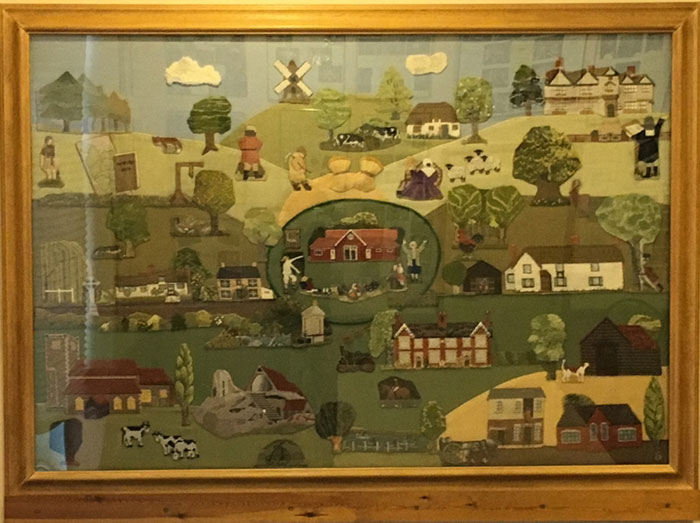
|
| The Doomsday Book (2) heralds both the second millennium and the coming of the Normans, the last successful military invaders of this country. Hempstead had already acquired its name and its agricultural character, a mix of arable farming and animal husbandry. Some land was kept as woodland, an essential resource at a time when timber was both the primary building material and fuel source. |
| It is fairly safe to assume that life for most villagers remained much the same throughout the Middle Ages. The village slowly grew and developed until it could support its own stone-built church (more on this later), which was consecrated on the 8th January 1365 by Simon of Sudbury. Nor does the picture alter fundamentally in the Tudor and Stuart periods. We see the Yeoman farmer (4) and farm labourer (6) still eking out a hard-won living from the land. Near them are some of our famous Essex pigs (7). |
| An essential building in any agricultural village at this time was the mill. The postmill (5) was built in 1678 on the high ground to the south of the church probably as a replacement for an earlier structure. Unfortunately it burnt down around 1900. |
| Sheep-rearing and the woollen industry provided on-going employment for villagers. Women (8) working from home were able to add to the family income by spinning raw wool into yarn on their spinning wheels. On fine days, this could be done outside, possibly in small groups. The thread was then used by the male weavers in the production of Worsted and Fustian. As their looms were too big to be moved, the men had to work indoors, regardless of the weather. This industry was still thriving in the 1770s. |
| We know very little about individual families living in the village in Tudor and Stuart Times except for a family of gentry who were resident in Winslow Hall (9). This was the Harvey family whose most illustrious son William Harvey (1578-1657), (10), discovered the circulation of blood. Undeniably he was in the vanguard of the movement which turned medicine into a science. Having been physician to Charles 1, he seems to have found Hempstead a more comfortable place to live than London during the Commonwealth rule of Oliver Cromwell. From Hempstead he was able to travel to Cambridge to continue his teaching. |
| As if sensing that the world it had known for a thousand years was changing, the Great Hempstead Oak (11) died in 1790. It must have been an impressive sight standing at a majestic 100 feet tall and with a colossal girth of 55 feet. |
| Even in village societies, not everything was tranquillity and peace. In 1705 one Dick Turpin (12) was baptised in the church, having been born in the Bell Inn, now The Bluebell Inn (13). In former times he would probably have met his end at Anser Gallows, but his notorious criminal career took him far from his sleepy Essex home and in 1739 he was hanged in York. |
| Although Turpin was a footpad (a non-mounted robber) rather than a highwayman (one who robs from horseback), other people in the village would have owned horses. To our knowledge, no-one used their mounts for Turpin-like illegal purposes. These horses together with iron tools and implements required the services of the blacksmith in his smithy (14). This craftsman may even have made the spikes that were attached to the feet of the fighting cocks who are believed to have provided the infamous and bloody entertainment in the Ring of Trees (15). |
| Conforming to the popular picture of rural life in Hanovarian England, Boarded Barn (16) housed a pack of hunting-hounds that were still working in 1810. Named the Hempstead Invincibles, they must have created an impressive sight and sound on the hunting field particularly Chaunter (17). |
| With the advent of the Victorian age, more and more changes took place in Hempstead. In 1854 a school was built (18) for the education of the children of the parish. The church appears to have chosen Hempstead rather than the nearby village of Sampford as the site for its school because, in its opinion, there were too many dissenters living in Sampford. The needs of the elderly were also catered for when, in 1862, the Rutland Almshouses (20) were built. These proved a most welcome alternative to the type of Workhouse experienced by so many of the Victorian poor. |
| In this Age of Steam, the Hempstead farmers were now able to use a steam mill (19) for the grinding of their corn and steam traction engines (21) on their farms signalling the beginning of the end of the role of the working horse. |
| Perhaps the most dramatic change of the second millennium took place on the stormy night of the 28th January 1882, when the tower of St. Andrew's church collapsed (22) robbing the area of a familiar landmark. By 1888 the nave had been restored and the church re-opened. Thus it remained until, with the help of money from the Harvian Society, the tower was rebuilt to the nave height in 1933-34 and to its former height in 1959-61. (23) |
| Many of the houses in the village today link us with the past. In the High Street, "Box Cottage"(24) is only one example of an old cottage that has been carefully restored and modernised. Further along the street, the name "Forge House" (25) reminds us of the type of work done on that site years ago. In the heart of the village stands a most poignant reminder of the past. The War Memorial records the names of the men who left Hempstead to fight in two World Wars never to return. One who did return after serving in the Far East, John Harding, created a topiary hedge of a locomotive outside his house, to please his daughter. (29) |
| Nowadays, the hand-operated water pump, pond and trough (26) area are all that remain to bear witness to a time when transport was by horses. |
| The spiral ends in the centre of the tapestry. Here, beneath the village sign, a Morris Dancer performs an ancient dance during an annual visit (27). Opposite him is Margaret Grimster (31) who served as Parish Clerk for 40 years, performing a joyous jig at the news of a Lottery Grant awarded to Hempstead for the renovation of the Village Hall (30). To illustrate how well the building is used, symbols represent many of the village societies (Bowls, Golf, Drama, Gardening, Bell Ringing et al (28). The re-opening of this invaluable and greatly improved village amenity was a wonderful way of beginning the Third Millennium in January 2000. |
| We thank all those whose skill and hard work brought us this beautiful tapestry, designed to hang in the new village hall. This fine pictorial representation of the story of our village helps us to appreciate the past of our rural Essex home, whilst at the same time, encouraging us to look forward with optimism to the next thousand years of Hempstead history. |
For a pdf version please click here. |
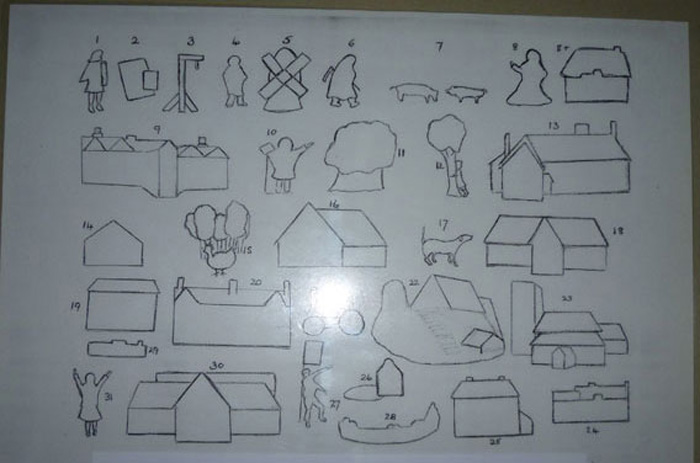
|
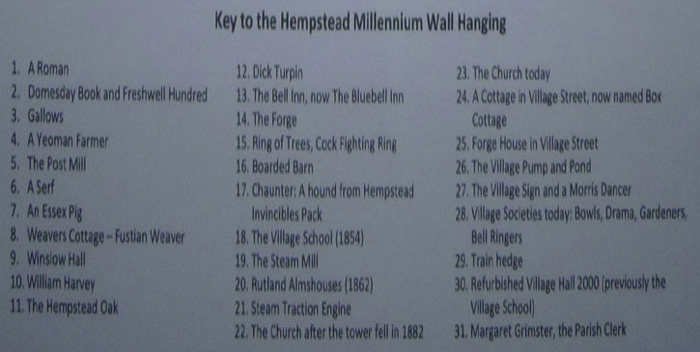
|
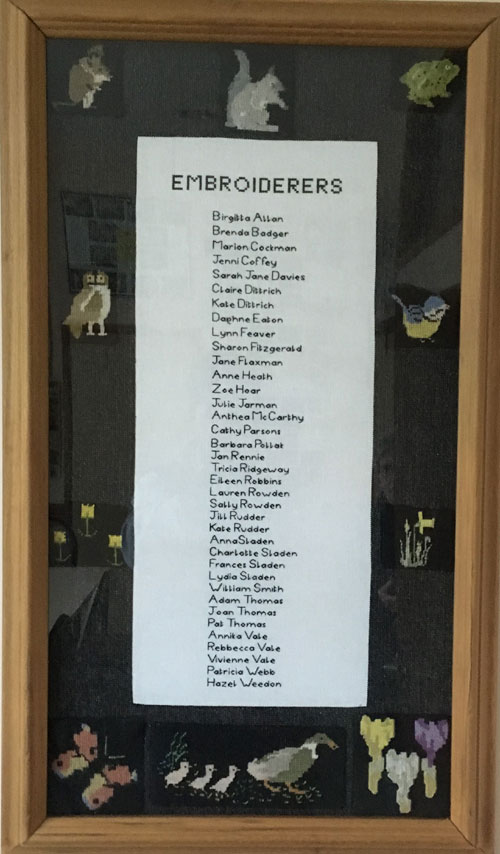
|
|
